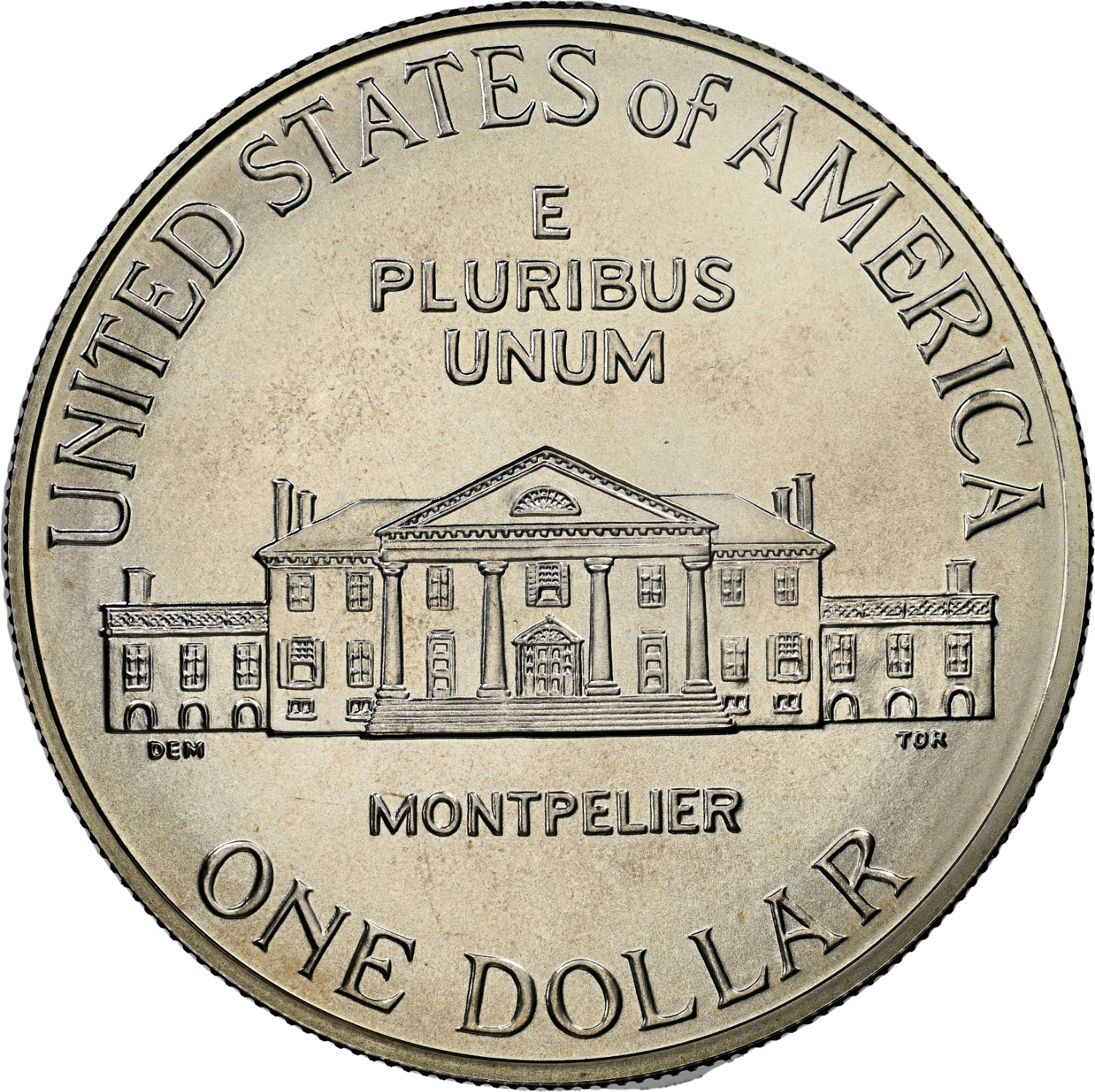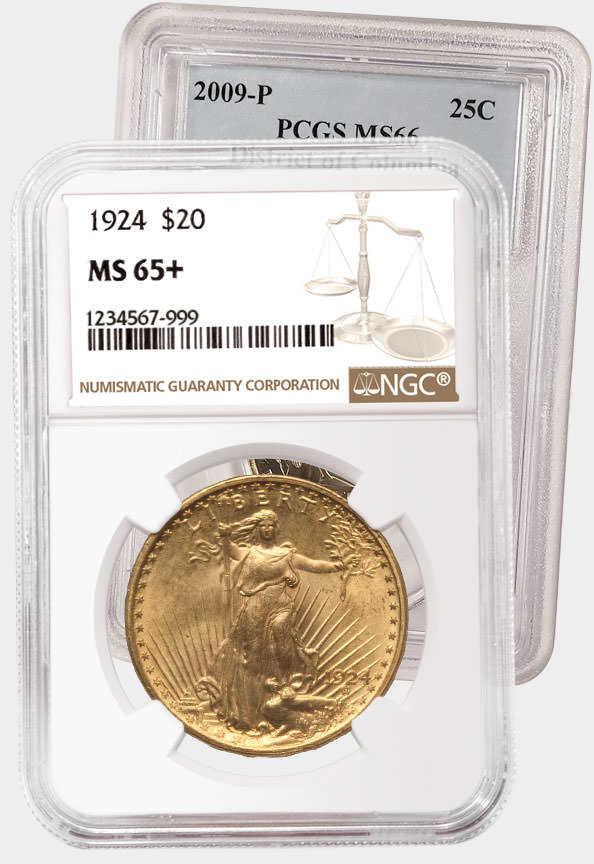The same May 13, 1992 legislation that provided for the Columbus coin program likewise authorized a three-coin set honoring the bicentennial of the Bill of Rights and its primary author, James Madison. Surcharges were to be included within the sales prices of these coins, and the money so raised was earmarked for the James Madison Memorial Fellowship Trust Fund. This set includes uncirculated and proof editions of a silver half dollar, a silver dollar and a gold half eagle. The latter, being a gold coin, was naturally struck at West Point, while Denver received the uncirculated dollar and San Francisco minted the proof specimens of both the dollar and half dollar. In an unusual move, West Point was selected to coin the uncirculated half dollar, this being only the second time it would strike a non-gold commemorative. Recognizing that sales of recent commemorative coins had declined, the authorized mintages for this series were just one million half dollars, 900 thousand silver dollars and 300 thousand half eagles. T. James Ferrell's obverse for the half dollar shows Madison seated with pen to paper. To the right is a view of his famous home, Montpelier, and above this is the inscription "JAMES MADISON FATHER OF THE BILL OF RIGHTS." The date of coining is near the lower border, while the mintmark is likewise near the border at four o'clock, and Ferrell's initials appear beneath Madison's elbow. The torch of freedom held aloft dominates the reverse of this coin, flanked by the inscriptions "THE BILL OF RIGHTS" and "OUR BASIC FREEDOMS." Beneath each of these is a single star. This side is the work of sculptor Dean E. McMullen, whose initials are seen at the truncation of the arm holding the torch. The remaining elements of both sides are comprised entirely of statutory inscriptions. U. S. Mint Sculptor-Engraver Thomas D. Rogers, Sr. modeled the design submitted by artist William Krawczewicz which appears on the obverse of the silver dollar. Both men's initials are seen at the truncation of the right-facing bust of James Madison. This simple design includes just the date of coining and the mintmark below it, as well as two statutory legends. The elevation view of Montpelier seen on the half dollar's obverse is enlarged for the reverse of the dollar, and the stately home's name appears below it. At either end of the house's baseline are the initials of Dean E. McMullen, who provided the drawing, and Thomas D. Rogers, Sr., who modeled it for coining. The balance of this simple design is comprised of statutory inscriptions. The obverse of the half eagle features yet another portrait of Madison, this time contemplating the Bill of Rights held in his hands. The statesman's name is below his figure, and below this is the date of coining. A semi-circle of thirteen stars balances the portrait at right, this arc leading to the coin's mintmark. The initials of designer Scott R. Blazek and sculptor William C. Cousins appear on Madison's sleeve. The crowded reverse features an eagle at top grasping a parchment. Below this are the words "BILL OF RIGHTS" and a quotation from Madison: "EQUAL LAWS PROTECTING EQUAL RIGHTS ARE . . . THE BEST GUARANTEE OF LOYALTY AND LOVE OF COUNTRY." This inscription is flanked at left by a torch and at right by a laurel branch. On either side of the branch's stem are the initials of designer Joseph D. Pena and sculptor Edgar Z. Steever IV. Statutory inscriptions balance out the design on both sides. The usual pre-issue discounts were offered for each of the six coins of uncirculated and proof finish. In addition, buyers could order the Young Collectors edition of the uncirculated half dollar, which came in a colorful package designed to interest children in the subject matter, or the James Madison Coin and Medal Set, which included both the half dollar and a miniature edition of the bronze medal from the presidential series. Also, the proof version of the half dollar was included in the Mint's 1993 Prestige Proof Set. Finally, some 9,656 examples of the uncirculated half dollar were serially numbered and countermarked outside of the mint with the initials of the Madison Memorial foundation and the American Numismatic Association. Despite these many inducements to potential buyers, the resulting net sales figures were yet another disappointment for the Treasury and the coins' sponsoring organizations. There were simply too many coins being offered in a short period of time, and the price advances seen in recent years for high-grade, certified examples simply did not exist then. Collectors of today now look more favorably upon these coins than did those of 1993.







